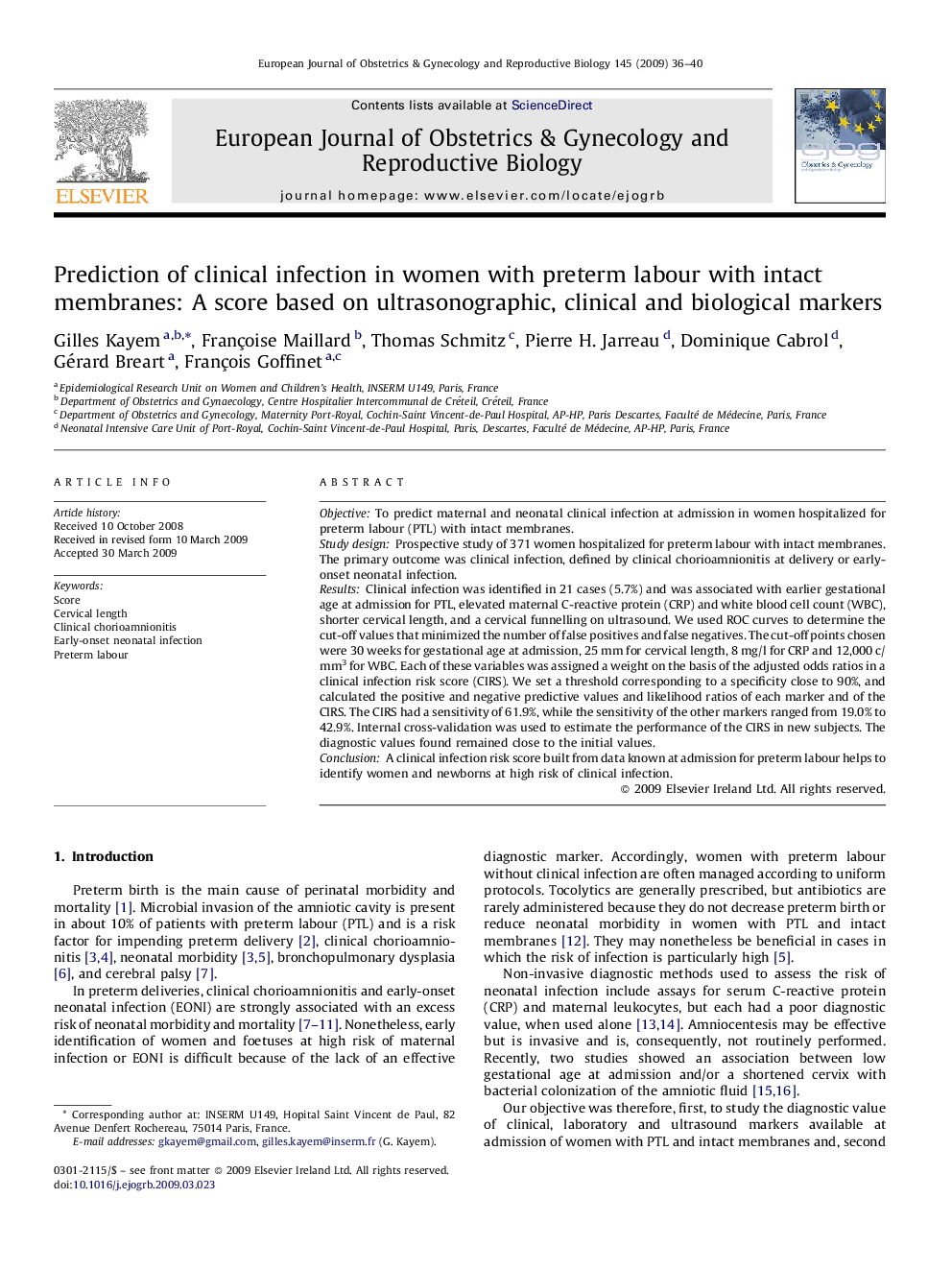| Article ID | Journal | Published Year | Pages | File Type |
|---|---|---|---|---|
| 3921603 | European Journal of Obstetrics & Gynecology and Reproductive Biology | 2009 | 5 Pages |
ObjectiveTo predict maternal and neonatal clinical infection at admission in women hospitalized for preterm labour (PTL) with intact membranes.Study designProspective study of 371 women hospitalized for preterm labour with intact membranes. The primary outcome was clinical infection, defined by clinical chorioamnionitis at delivery or early-onset neonatal infection.ResultsClinical infection was identified in 21 cases (5.7%) and was associated with earlier gestational age at admission for PTL, elevated maternal C-reactive protein (CRP) and white blood cell count (WBC), shorter cervical length, and a cervical funnelling on ultrasound. We used ROC curves to determine the cut-off values that minimized the number of false positives and false negatives. The cut-off points chosen were 30 weeks for gestational age at admission, 25 mm for cervical length, 8 mg/l for CRP and 12,000 c/mm3 for WBC. Each of these variables was assigned a weight on the basis of the adjusted odds ratios in a clinical infection risk score (CIRS). We set a threshold corresponding to a specificity close to 90%, and calculated the positive and negative predictive values and likelihood ratios of each marker and of the CIRS. The CIRS had a sensitivity of 61.9%, while the sensitivity of the other markers ranged from 19.0% to 42.9%. Internal cross-validation was used to estimate the performance of the CIRS in new subjects. The diagnostic values found remained close to the initial values.ConclusionA clinical infection risk score built from data known at admission for preterm labour helps to identify women and newborns at high risk of clinical infection.
